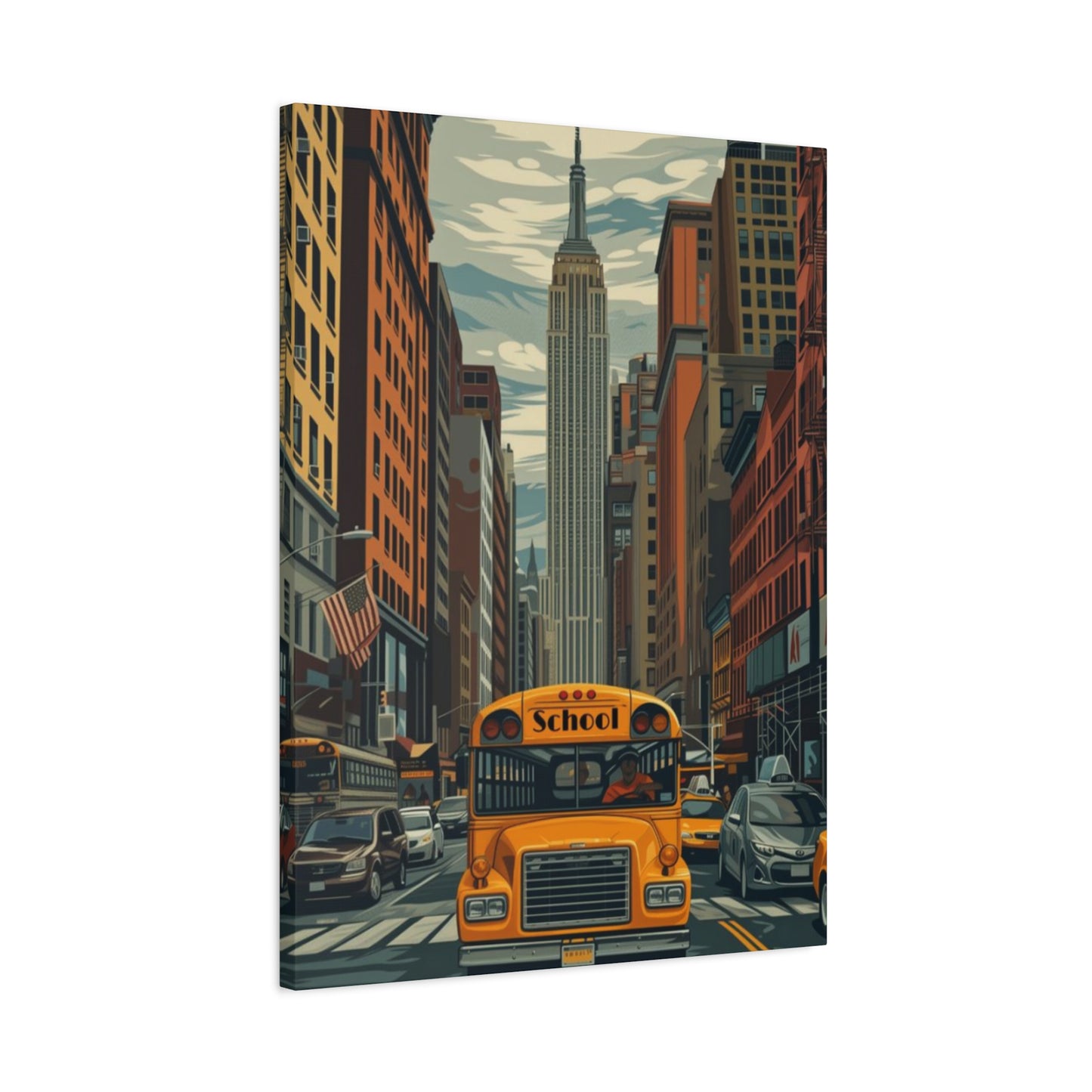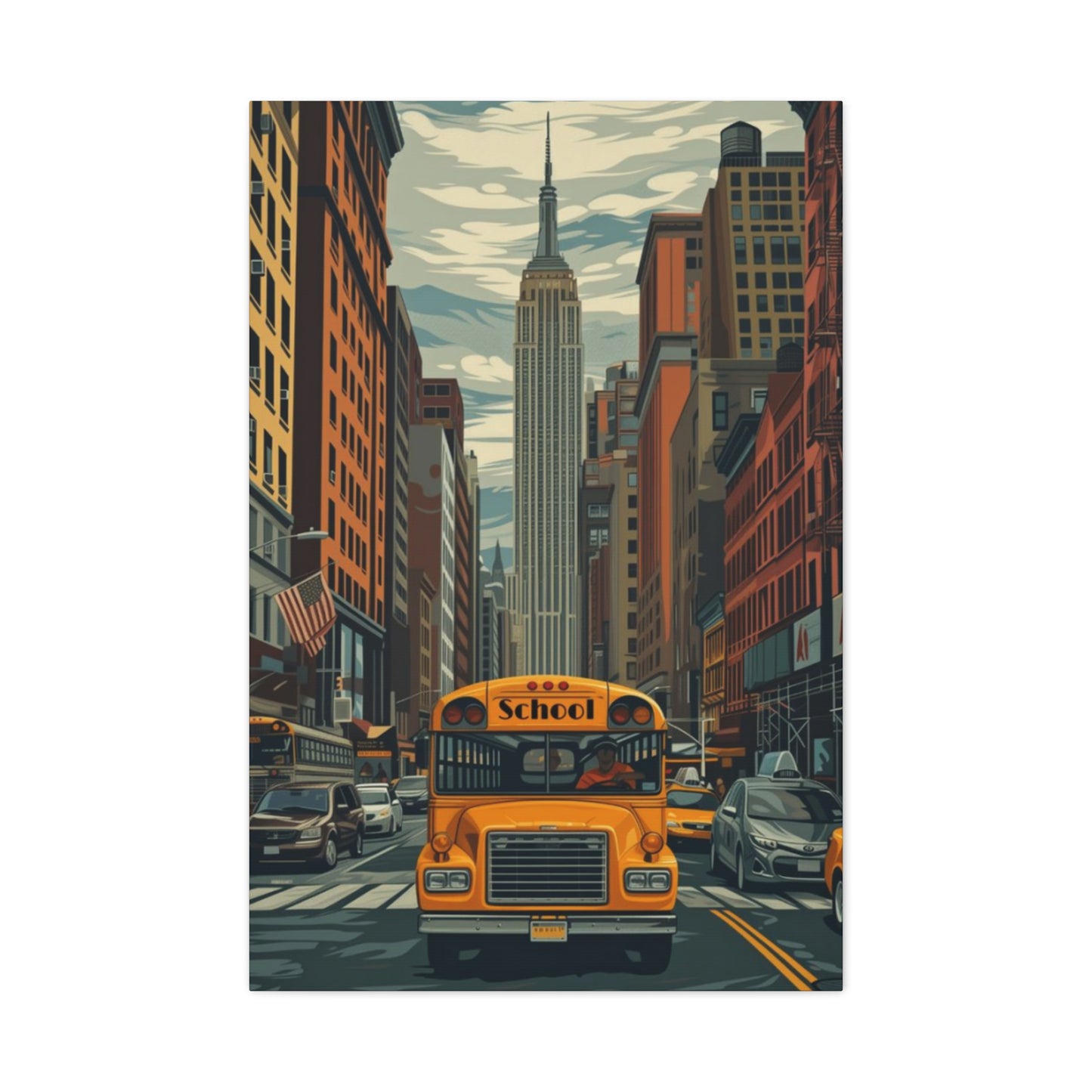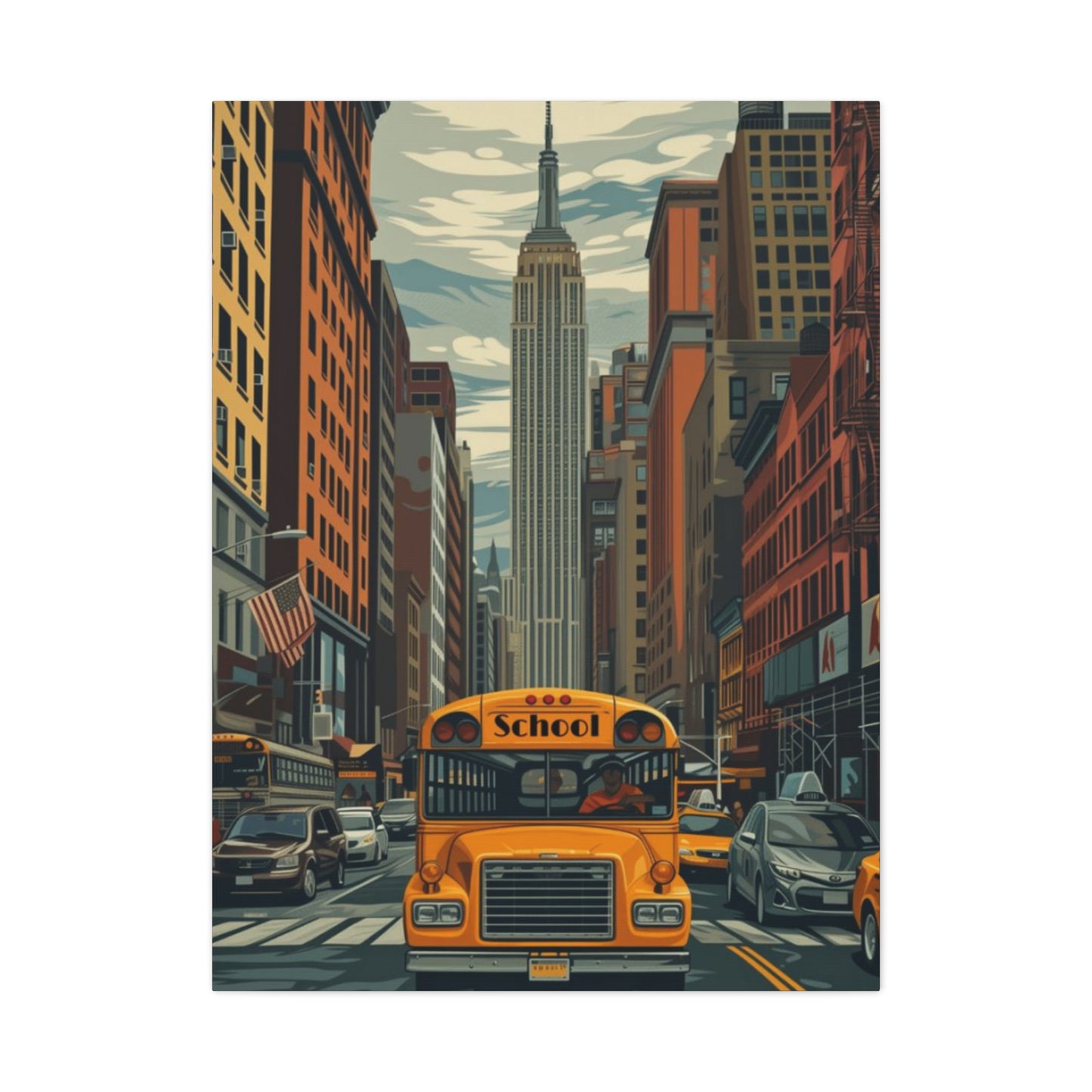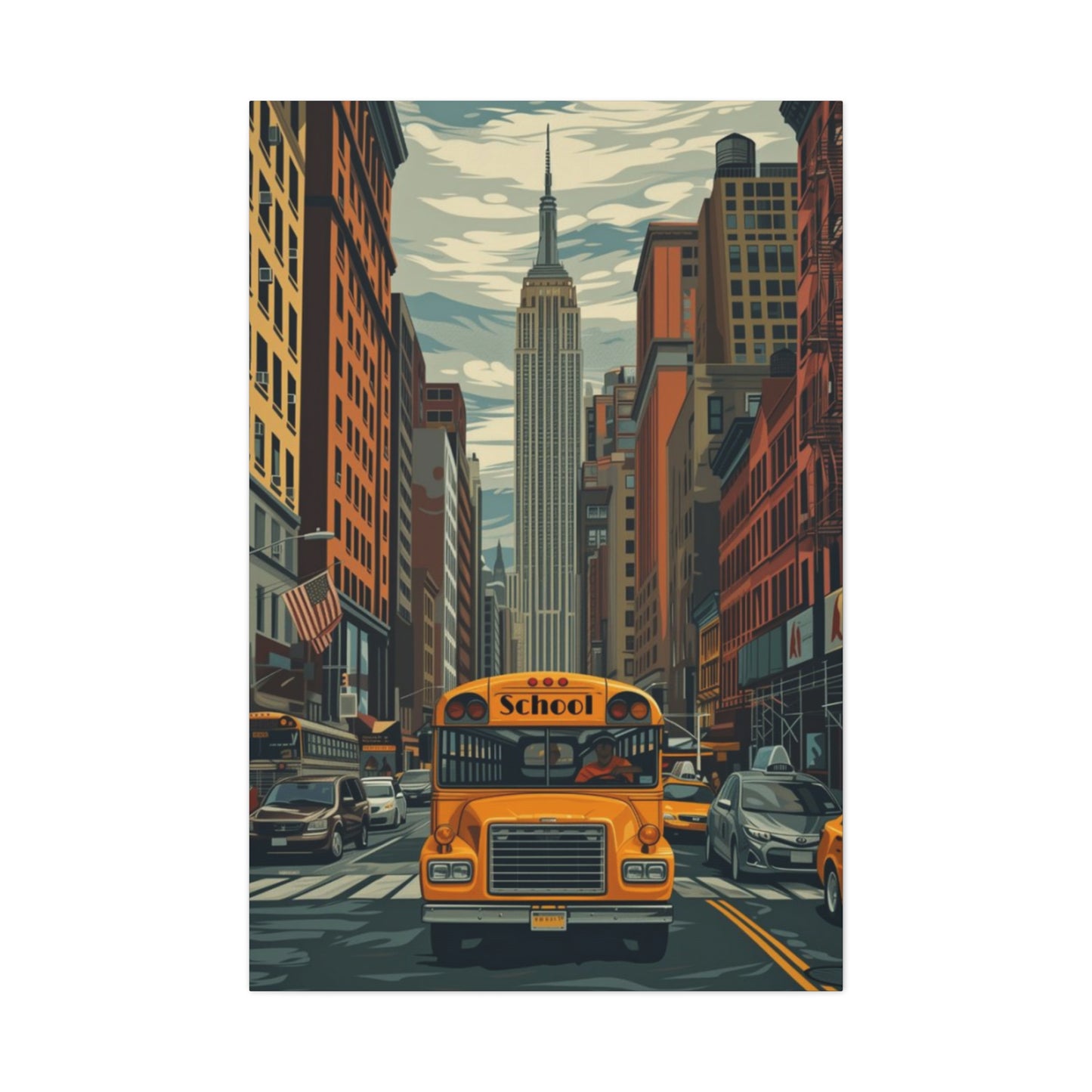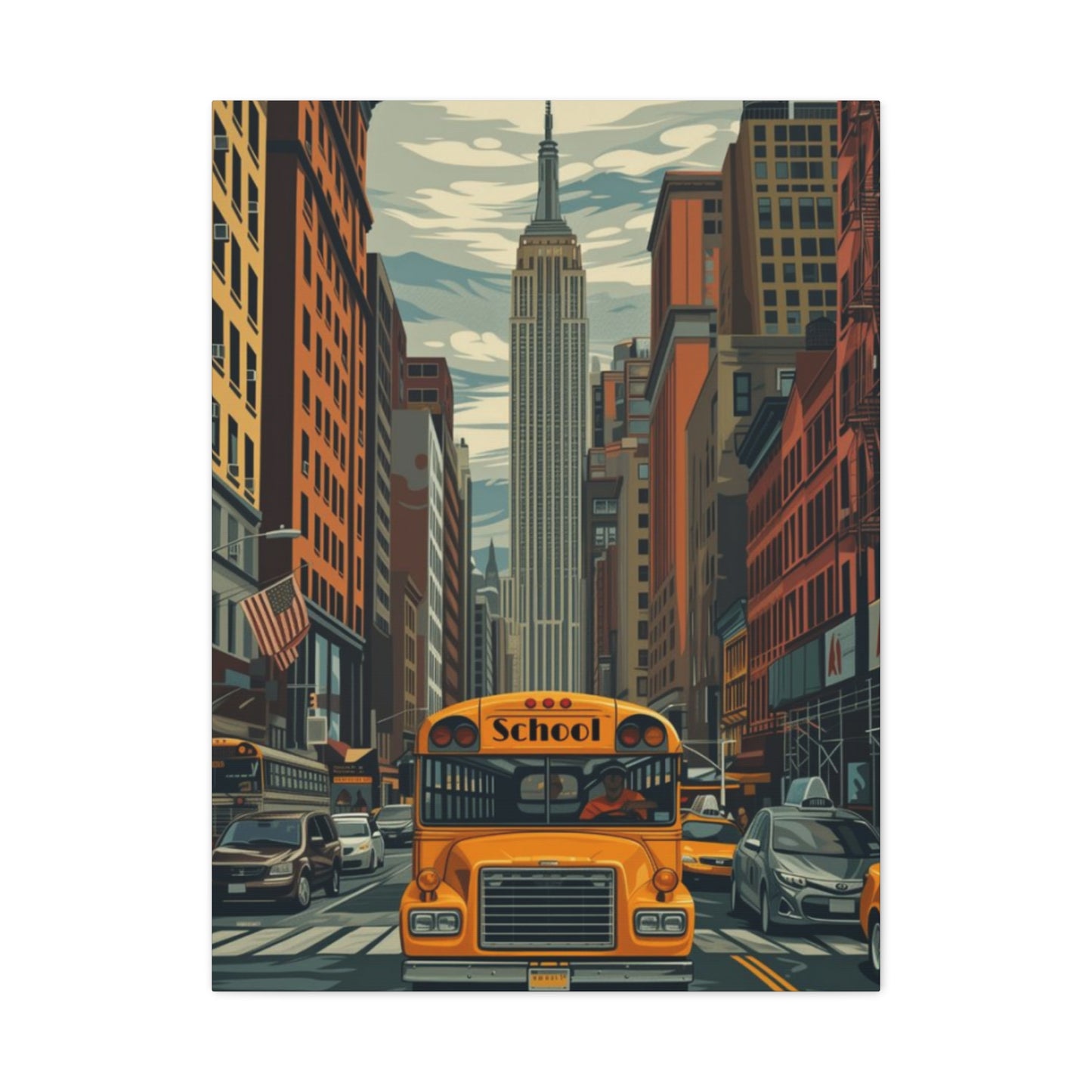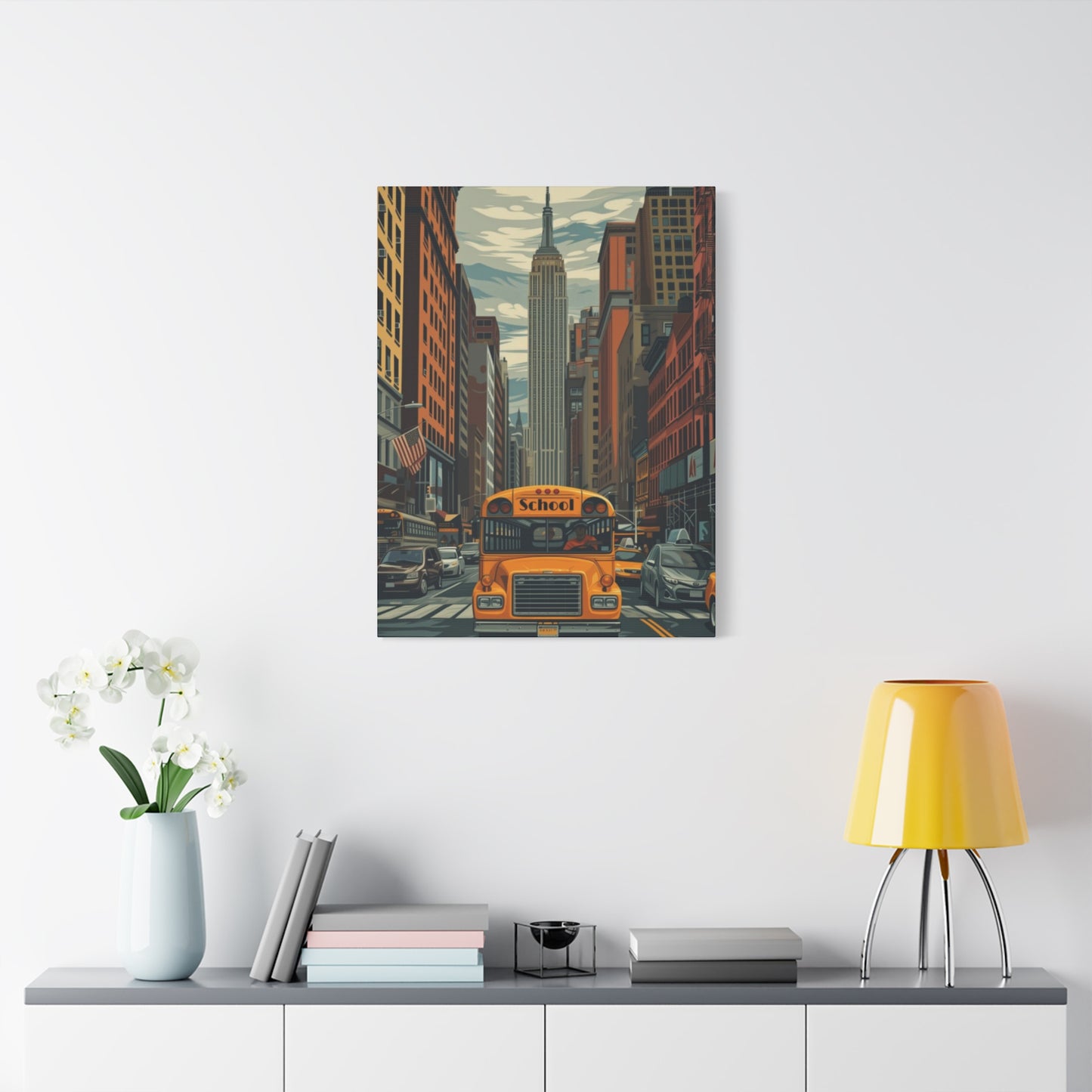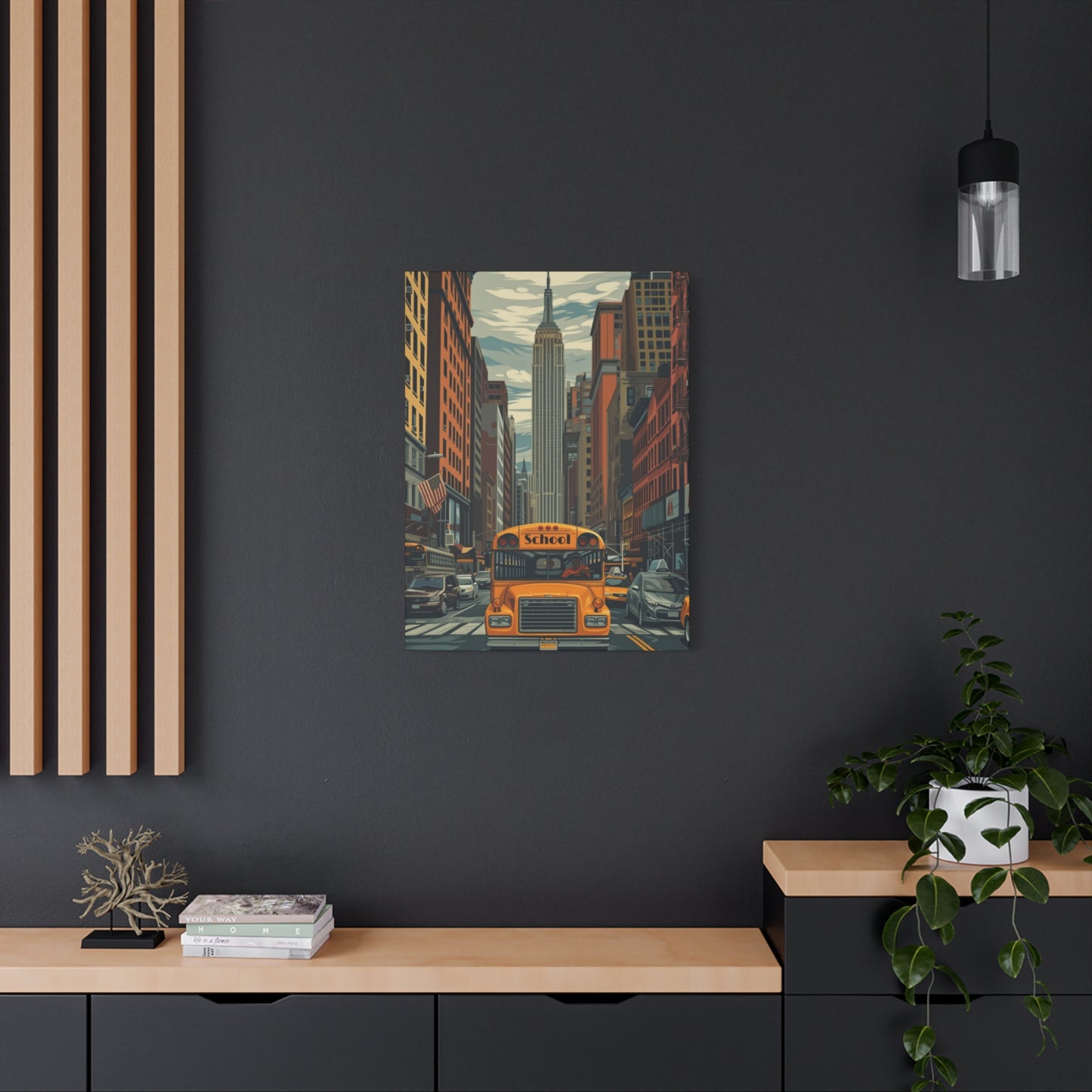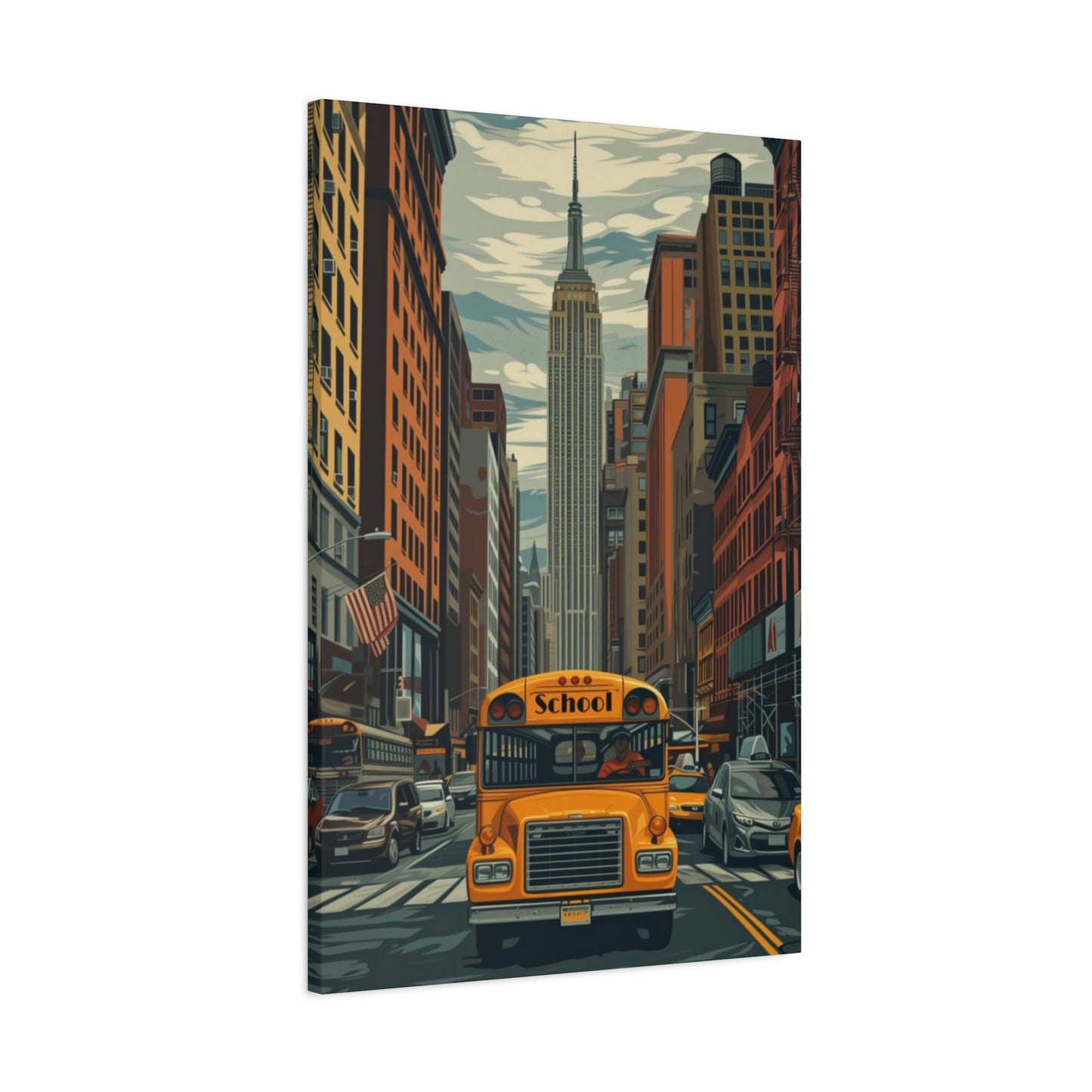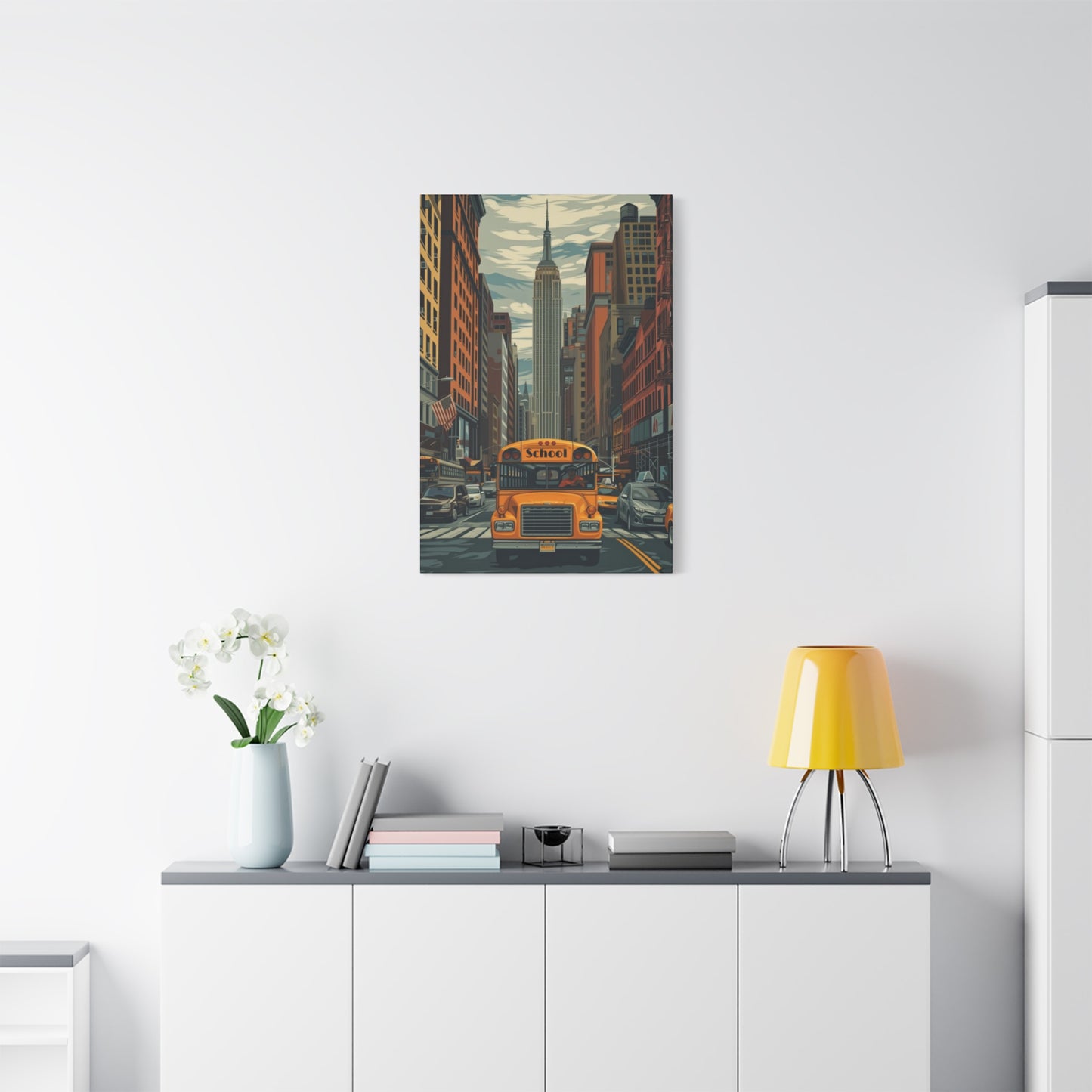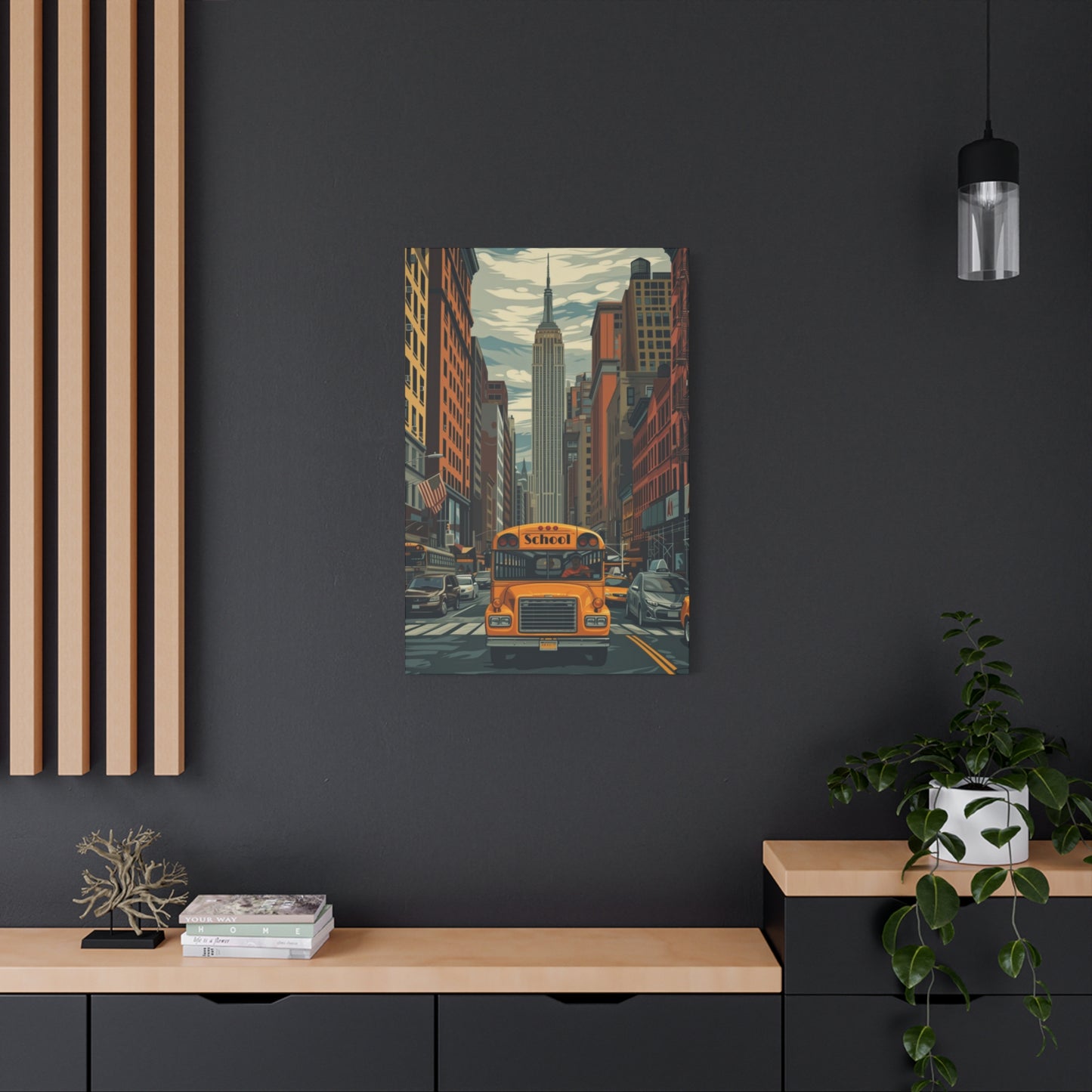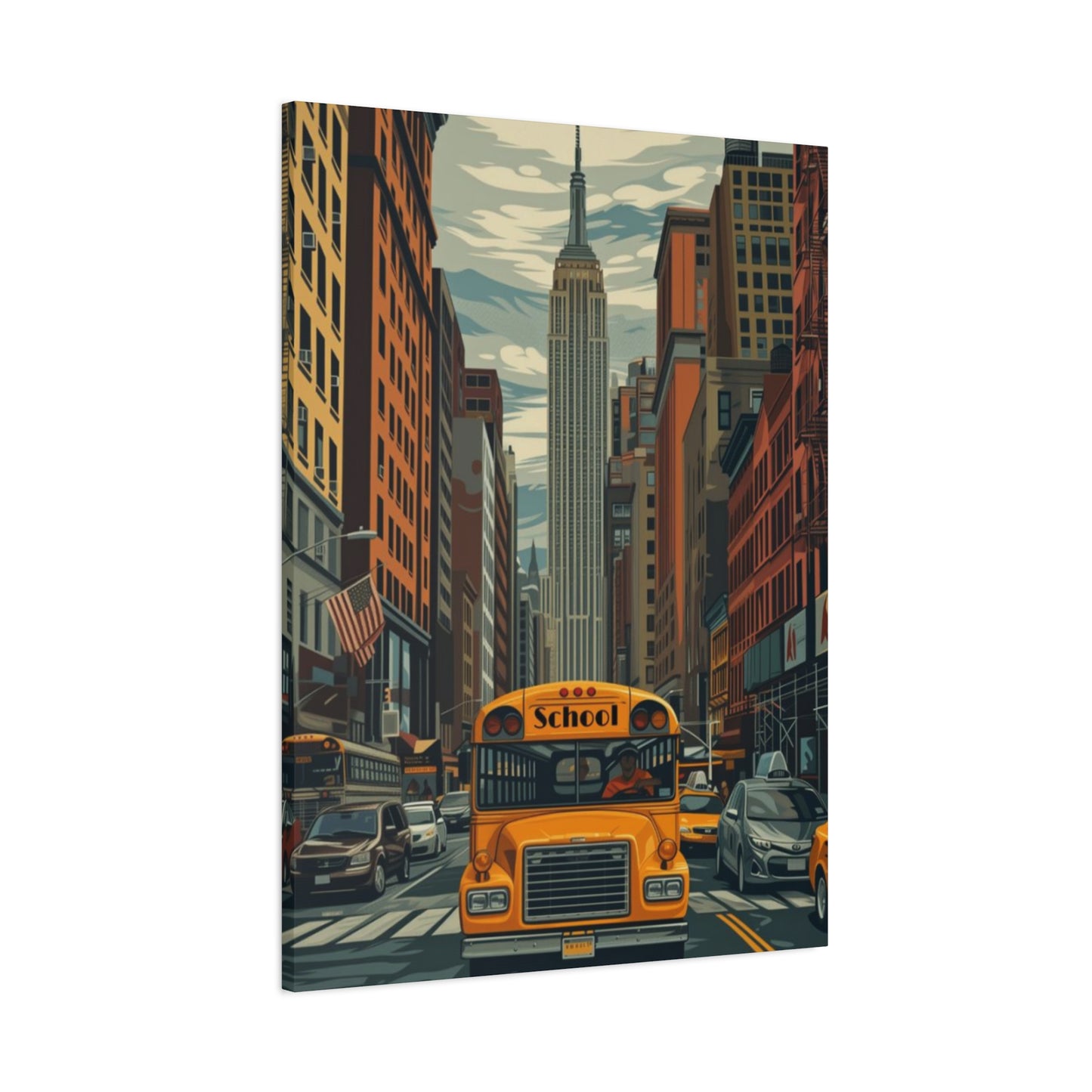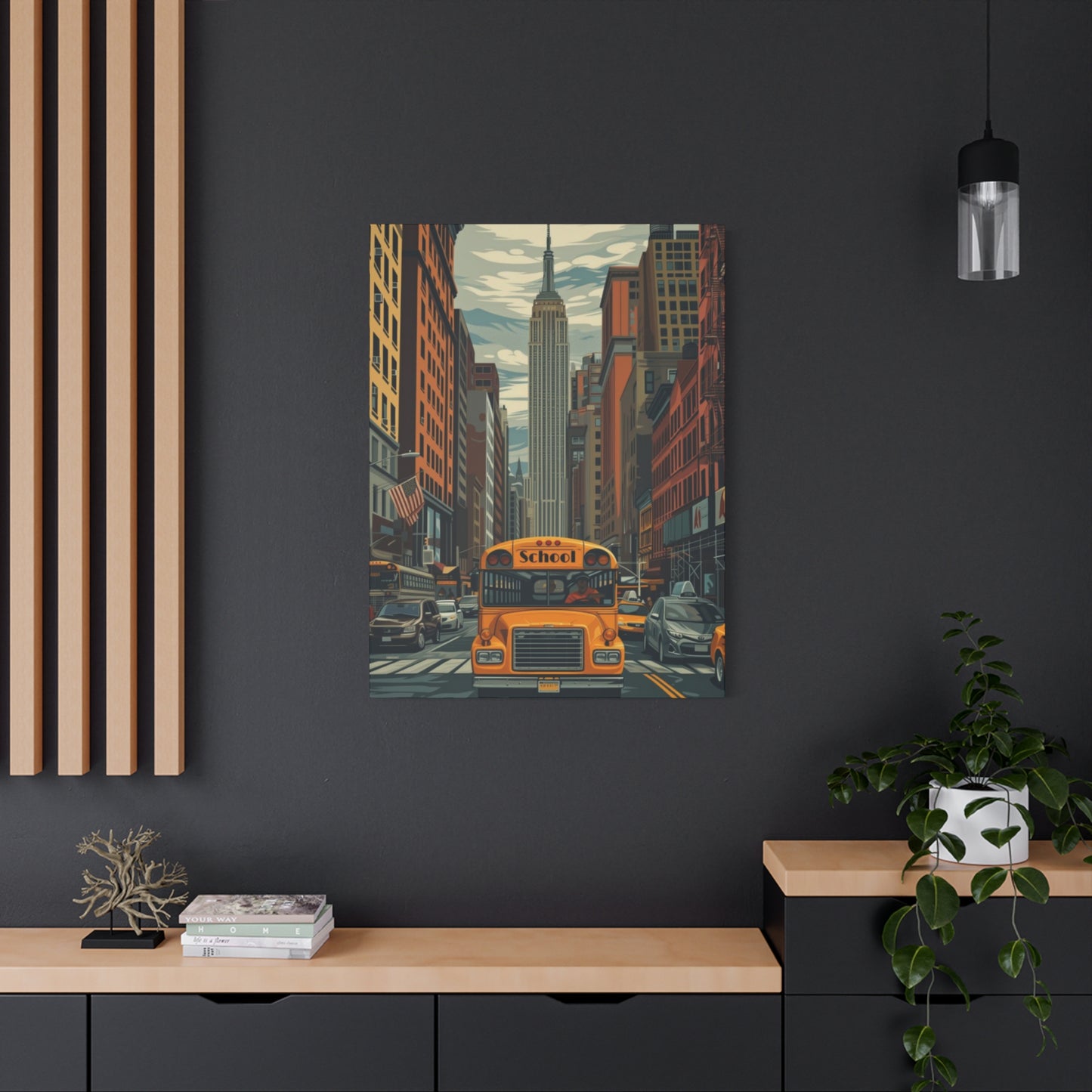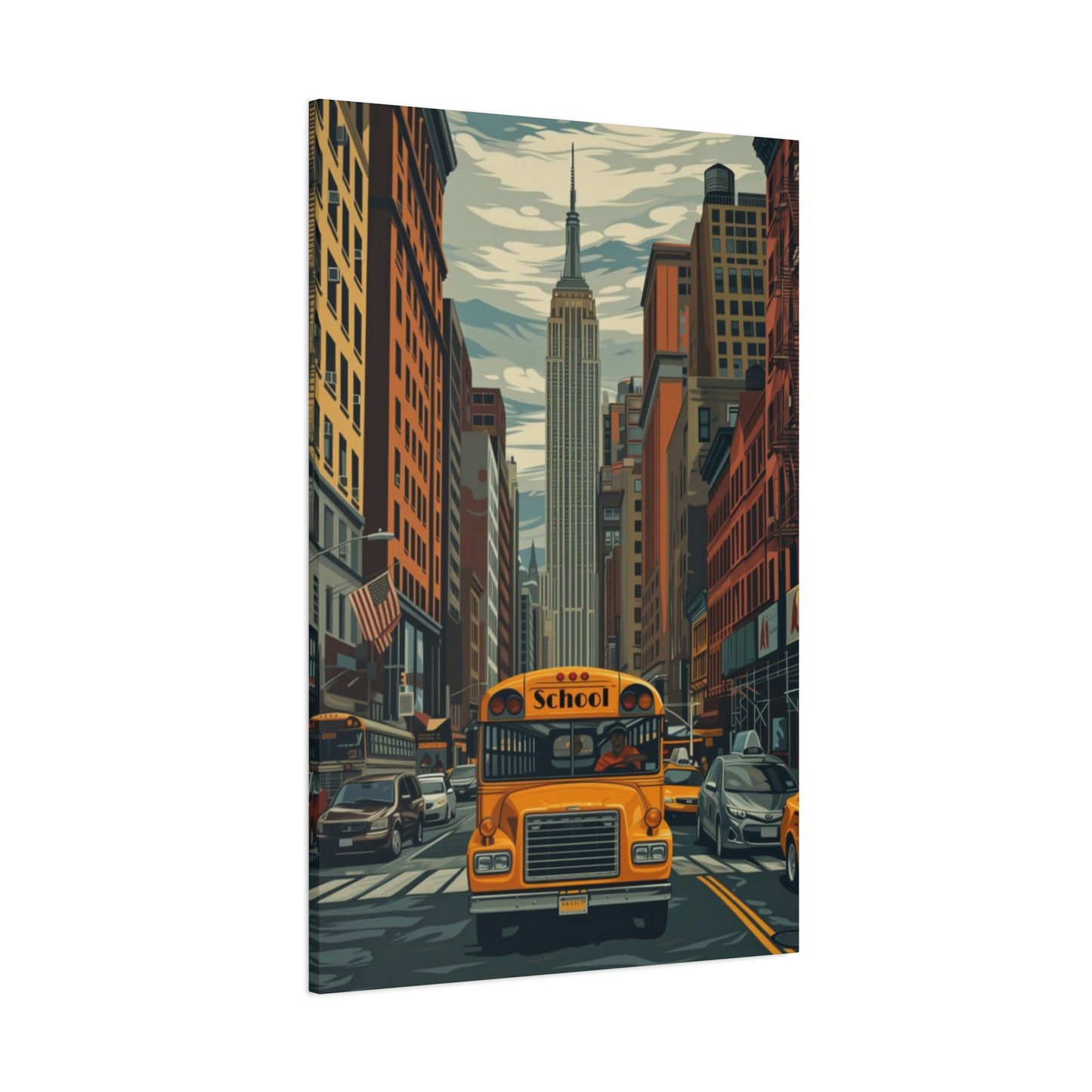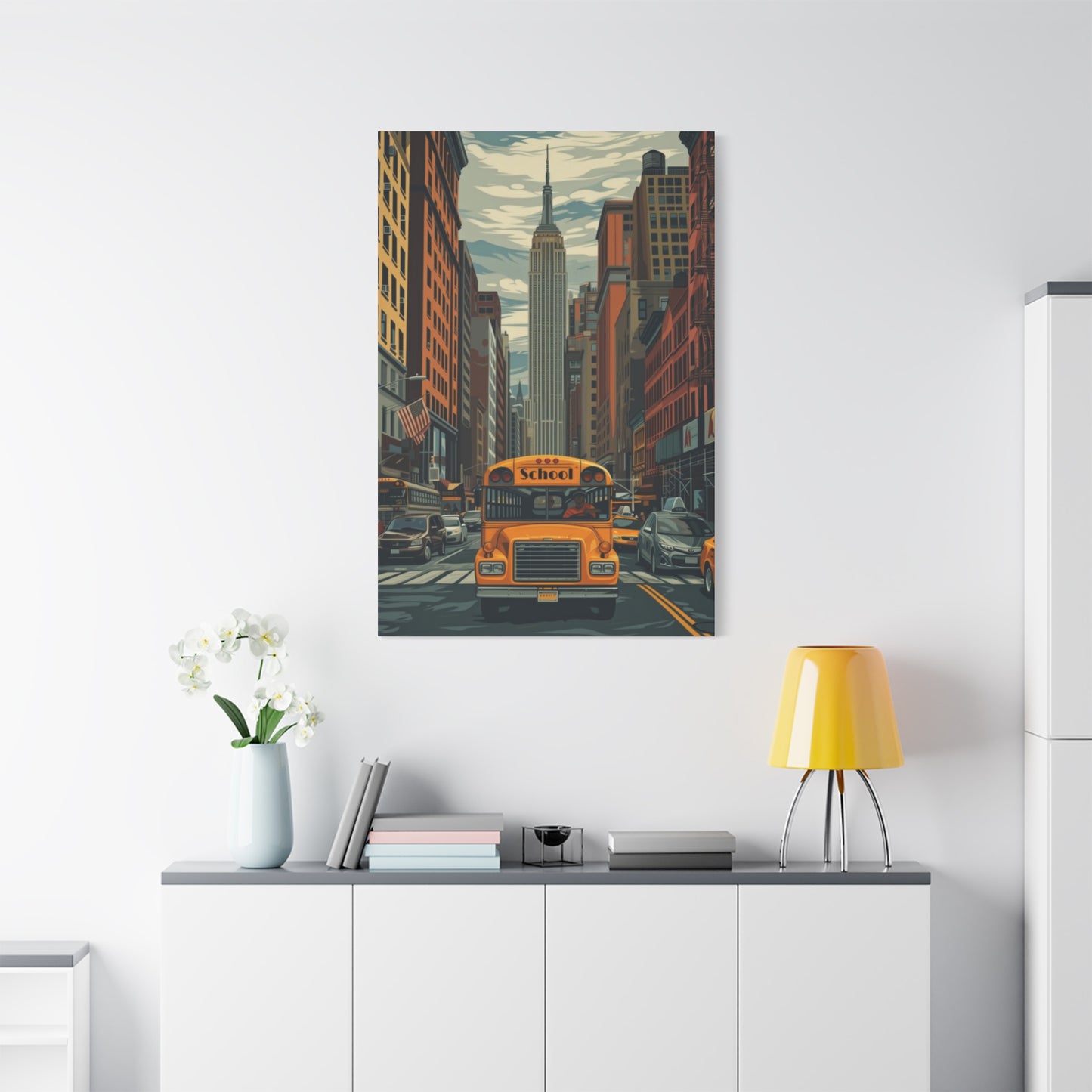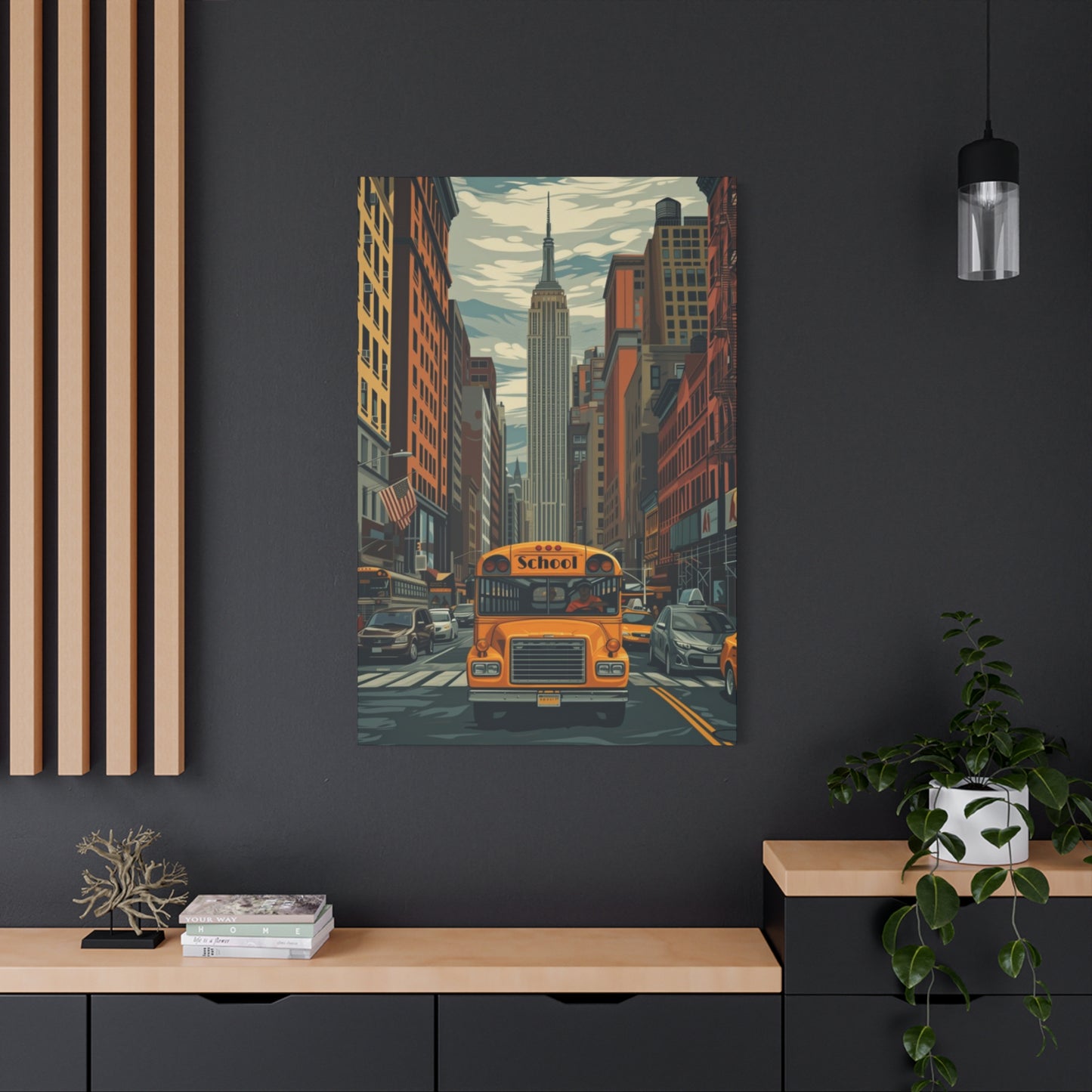Capturing the Spirit of NYC: Bus Wall Art That Celebrates the City That Never Sleeps
New York City pulses with an energy that flows through its veins like blood through arteries, and nowhere is this more evident than in the constant movement of its public transportation system. The iconic buses that traverse the concrete jungle serve as more than mere vehicles; they are moving canvases, urban art subjects, and storytellers of metropolitan life. This comprehensive exploration delves into the multifaceted world of capturing the essence of the city's bus system through artistic expression, photography, and creative interpretation.
The relationship between New York's buses and artistic expression extends far beyond simple documentation. These mechanical giants carry within their frames the hopes, dreams, and daily struggles of millions of residents and visitors. Each bus route tells a unique story, weaving through diverse neighborhoods, connecting communities, and creating a tapestry of urban experience that artists have long sought to capture and interpret.
From the gritty realism of street photography to the abstract interpretations of contemporary art, buses have become powerful symbols of urban life. They represent movement, connection, accessibility, and the democratic nature of public space. The artistic potential of these subjects lies not only in their physical presence but in their role as connectors of human experience across the sprawling metropolis.
Dynamic Motion Photography in Urban Transportation
Capturing buses in motion requires a sophisticated understanding of both technical photography skills and artistic vision. The challenge lies in freezing or intentionally blurring movement to convey the sense of urban energy that defines metropolitan life. Professional photographers and artists have developed numerous techniques to showcase the dynamic nature of these vehicles as they navigate through crowded streets.
The art of motion photography in urban transportation settings demands patience, timing, and an intuitive understanding of the city's rhythm. Successful practitioners position themselves at strategic locations where buses interact with the urban environment in compelling ways. These might include busy intersections where multiple bus routes converge, steep hills that showcase the vehicles' relationship with topography, or areas where natural light creates dramatic shadows and highlights.
Technical considerations for motion photography include shutter speed selection, which determines whether the bus appears frozen in time or captured with intentional motion blur. A fast shutter speed might freeze raindrops on windows or capture the exact expression of a passenger glimpsed through a window, while slower speeds can create streaks of light from headlights and taillights, suggesting the continuous flow of urban transportation.
Composition plays a crucial role in creating compelling motion imagery. Leading lines created by street markings, building edges, and the buses themselves guide the viewer's eye through the frame. The rule of thirds can be effectively applied by positioning buses at intersection points of the grid, while negative space allows the vehicle to "breathe" within the composition and emphasizes its movement through the urban landscape.
The relationship between buses and their environment creates opportunities for layered storytelling. Reflections in windows, shadows cast by elevated structures, and the interplay between artificial and natural lighting all contribute to the narrative potential of motion photography. These elements combine to create images that speak to the complexity and beauty of urban transportation systems.
Professional artists working in this medium often develop signature styles that distinguish their work. Some focus on high-contrast black and white imagery that emphasizes form and movement, while others embrace vibrant color palettes that reflect the energy and diversity of city life. The choice of approach depends on the artist's vision and the specific story they wish to tell about urban transportation.
Landmark Integration in Urban Art Photography
The juxtaposition of buses against famous landmarks creates a unique visual dialogue between transportation infrastructure and architectural heritage. This artistic approach emphasizes the democratic nature of public transportation, showing how buses serve all areas of the city, from historic districts to modern commercial centers. The contrast between old and new, permanent and mobile, creates compelling visual narratives that speak to the city's evolution and continuity.
Photographers seeking to capture this relationship must consider timing, positioning, and atmospheric conditions. The golden hour, when warm light bathes both landmarks and vehicles, often provides the most favorable conditions for creating memorable images. During this time, the harsh contrasts of midday sun soften, allowing for more nuanced tonal relationships between subjects.
Strategic positioning enables artists to create meaningful connections between buses and landmarks. This might involve finding elevated positions that show buses moving through historic squares, or ground-level perspectives that frame landmarks through bus windows. The key is to avoid treating the bus and landmark as separate elements, instead creating compositions where they inform and enhance each other.
Seasonal variations add another layer of complexity and opportunity to landmark integration photography. Snow-covered buses passing illuminated buildings create entirely different moods than the same scene captured during summer months. Spring blossoms can frame both buses and landmarks, while autumn foliage provides warm color palettes that unify diverse architectural elements.
The human element remains crucial in landmark integration photography. Passengers boarding or alighting from buses, pedestrians waiting at stops, and drivers navigating through traffic all contribute to the living narrative of urban transportation. These human stories prevent the images from becoming mere architectural studies and instead celebrate the ongoing relationship between people, transportation, and place.
Weather conditions offer additional creative possibilities for landmark integration photography. Rain creates reflections that double the visual impact of both buses and buildings, while fog can isolate subjects and create mysterious, atmospheric conditions. Snow transforms familiar scenes into winter wonderlands, where the warm glow of bus interiors contrasts beautifully with cold exterior conditions.
Detailed Macro Photography of Transportation Elements
The intricate details of bus design offer rich opportunities for artistic exploration through close-up photography and detailed study. Every element, from worn handrails polished by countless hands to destination signs displaying the poetry of place names, tells part of the larger urban story. These macro perspectives reveal the human impact on mechanical objects and the way transportation infrastructure bears witness to daily life.
Weathered surfaces tell stories of resilience and service. Paint chips, scratches, and wear patterns create abstract compositions that speak to the passage of time and the intensity of urban use. These details, often overlooked in wider shots, become powerful artistic subjects when isolated and examined closely. The patina of age transforms utilitarian objects into historical documents.
Typography and signage provide additional layers of artistic interest. Route numbers, destination displays, and safety notices represent the intersection of design, information, and function. The fonts chosen for these elements reflect different eras of transit system development, creating a typographic archaeology that artists can explore and document. Vintage buses preserve older design aesthetics, while newer vehicles showcase contemporary approaches to information display.
Hardware details such as hinges, handles, and mechanical elements showcase the engineering solutions required for public transportation. These functional elements often possess their own aesthetic appeal, with curves, angles, and proportions that reflect both practical requirements and design sensibilities. Close examination reveals the thought and craft that goes into creating durable, user-friendly transportation infrastructure.
Interior elements offer equally rich photographic opportunities. Seat fabrics, with their patterns designed to hide wear and stains, create interesting geometric compositions. Handholds, worn smooth by millions of grips, show the human scale of public transportation. Windows, scratched and etched by time and use, filter and fragment views of the passing city in unique ways.
Lighting plays a crucial role in macro photography of transportation details. Natural light streaming through windows can create dramatic highlights and shadows that emphasize texture and form. Artificial interior lighting adds warmth and character to evening shots, while external street lighting creates mood and atmosphere for nighttime detail work.
Interior Spaces as Artistic Inspiration
Bus interiors represent mobile galleries of human experience, temporary communities that form and dissolve with each stop. These spaces, designed for efficiency and durability, possess their own aesthetic qualities that artists have increasingly recognized and celebrated. The interplay of natural and artificial light, the geometry of seating arrangements, and the constant flow of passengers create dynamic compositions that change throughout the day.
The diversity of passengers provides endless inspiration for artistic interpretation. Each person carries their own story, destination, and mood, contributing to the collective narrative of public transportation. Respectful observation and documentation of these human interactions reveals the social dynamics of shared urban space and the ways people navigate proximity with strangers.
Architectural elements within buses create interesting geometric relationships. The curves of ceiling lines, the repetition of seat backs, and the linear progression of aisles provide strong compositional elements. These forms are enhanced by the changing light conditions as buses travel through different urban environments, with shadows and highlights shifting throughout the journey.
Color palettes within bus interiors often reflect institutional design choices intended to be both pleasant and practical. These color schemes, whether muted and professional or bright and energetic, contribute to the overall atmosphere of the space and provide artistic frameworks for creative interpretation. The way these colors interact with passenger clothing, personal belongings, and external light creates constantly changing visual compositions.
Reflections and transparency add layers of visual complexity to interior photography. Windows reflect interior scenes while simultaneously revealing exterior views, creating layered images that capture multiple aspects of the urban experience simultaneously. These double exposures, whether created intentionally or as natural phenomena, add depth and mystery to interior documentation.
Sound and movement, while not directly captured in still photography, influence the aesthetic experience of bus interiors. The rhythm of engine noise, the whisper of pneumatic brakes, and the conversations of passengers all contribute to the sensory environment that artists seek to convey through visual means. Understanding these elements helps create more complete and evocative artistic interpretations.
Underground and Surface Transportation Art Integration
The relationship between subway systems and bus networks creates opportunities for artistic exploration of transportation connectivity and urban flow. These two modes of transport complement each other, creating a comprehensive system that artists can celebrate through integrated approaches that show how different transportation modes work together to serve urban populations.
Transfer points between subway stations and bus stops become particularly rich subjects for artistic interpretation. These spaces represent moments of transition, where passengers move between underground and surface transportation. The architectural differences between subway stations and street-level bus stops create visual contrasts that emphasize the variety of urban transportation experiences.
The temporal relationships between different transportation modes add narrative possibilities to artistic work. Rush hour scenes where subway passengers emerge to catch connecting buses show the choreographed dance of urban commuting. These moments of convergence reveal the efficiency and complexity of integrated transportation systems.
Underground spaces possess their own aesthetic qualities that contrast dramatically with surface-level bus environments. The artificial lighting, tiled surfaces, and enclosed nature of subway stations create different moods and visual opportunities than the open-air experience of bus travel. Artists can explore these contrasts to highlight the diversity of urban transportation experiences.
Weather impacts surface transportation more dramatically than underground systems, creating additional opportunities for comparative artistic work. Buses struggling through snowstorms while subways operate normally underground, or buses providing service when subway flooding disrupts underground operations, demonstrate the complementary nature of different transportation modes.
The human experience of transitioning between transportation modes offers rich material for artistic interpretation. The moment of emerging from underground stations into daylight, the decision-making process of choosing between transportation options, and the way people adapt their behavior to different transportation environments all provide insights into urban life that artists can explore and celebrate.
Vintage Advertising and Historical Documentation
The evolution of bus advertising reflects changing commercial aesthetics, social values, and design trends throughout different eras. Vintage advertisements preserved on older buses or documented in archival photography provide windows into past decades, showing how commercial art has evolved alongside transportation technology and urban development.
Typography in vintage bus advertising demonstrates the progression of design philosophy and printing technology. Hand-lettered signs gave way to mechanical typesetting, which eventually evolved into digital displays. Each era brought its own aesthetic sensibilities, color preferences, and compositional approaches that artists can study and incorporate into contemporary work.
Product categories advertised on buses reflect the social and economic priorities of different time periods. Cigarette advertisements from earlier decades, public service announcements from various eras, and the progression of technology advertising from radio to television to digital devices all tell stories about changing urban culture and consumer behavior.
The physical deterioration of vintage advertisements creates its own aesthetic appeal. Peeling paint, faded colors, and weather damage transform commercial messages into abstract art. These processes of decay and transformation fascinate artists who appreciate the unintentional beauty created by time and exposure to the elements.
Preservation efforts for vintage bus advertising recognize its cultural and artistic value. Museums, archives, and private collectors work to document and maintain examples of transportation advertising art. These preservation efforts ensure that future artists and researchers can study and appreciate the aesthetic evolution of commercial design in urban transportation contexts.
Contemporary artists often incorporate vintage advertising aesthetics into new work, creating pieces that reference historical design while addressing current themes. This approach acknowledges the continuity of advertising art while updating messages and imagery for contemporary audiences. The result bridges past and present, honoring design history while remaining relevant to current viewers.
Professional Drivers as Urban Heroes
Bus drivers represent the human heart of urban transportation systems, skilled professionals who navigate complex routes while ensuring passenger safety and comfort. Their daily experiences provide rich material for artistic interpretation, from the technical challenges of driving large vehicles through crowded streets to the social skills required for managing diverse passenger populations.
The driver's perspective offers unique viewpoints for artistic documentation. The view from the driver's seat shows the city from an elevated position, with clear sight lines down busy streets and into the flow of urban traffic. This perspective, rarely accessible to most city dwellers, provides opportunities for creating distinctive imagery that captures the driver's experience of urban navigation.
Working conditions for bus drivers include exposure to all weather conditions, interaction with diverse populations, and the responsibility of safely transporting hundreds of people daily. These challenges require resilience, skill, and dedication that artists can celebrate through portraiture and documentary work that honors their professional contributions to urban life.
The social interactions between drivers and passengers reveal the human side of public transportation. Regular passengers develop relationships with familiar drivers, creating informal communities that extend beyond mere transportation transactions. These relationships demonstrate how public transportation serves social as well as mobility functions in urban environments.
Diversity among bus drivers reflects the multicultural nature of urban populations. Drivers bring different backgrounds, languages, and perspectives to their work, contributing to the rich cultural tapestry of public transportation. This diversity provides opportunities for artists to explore themes of immigration, community, and cultural exchange within transportation contexts.
Recognition of bus drivers' contributions to urban life has evolved over time, with increasing appreciation for essential workers who maintain urban mobility. Artistic work that celebrates these professionals helps raise awareness of their importance and the skills required for their demanding profession. Such work contributes to broader conversations about labor, service, and community in urban environments.
Neighborhood Character Through Transportation Art
Different neighborhoods throughout the city develop their own unique relationships with bus transportation, reflecting local demographics, economic conditions, and cultural characteristics. Artists documenting these relationships reveal how public transportation both shapes and reflects community identity, creating visual narratives that celebrate neighborhood diversity and character.
Architecture surrounding bus stops varies dramatically between neighborhoods, from historic brownstones to modern high-rises to small commercial districts. These architectural contexts influence the aesthetic experience of bus transportation and provide different backdrops for artistic work. The relationship between transportation infrastructure and neighborhood architecture tells stories about urban development and community evolution.
Passenger demographics shift throughout bus routes as vehicles travel between different neighborhoods. These changes reflect economic diversity, cultural differences, and varying transportation needs across the urban landscape. Artists sensitive to these transitions can document how public transportation serves as a democratic space that brings together people from different backgrounds.
Commercial districts along bus routes develop their own relationships with transportation infrastructure. Businesses cater to bus passengers, advertising targets commuters, and the rhythm of commercial activity often aligns with transportation schedules. These relationships create opportunities for artists to explore the intersection of commerce, transportation, and community life.
Community art projects often incorporate bus stops and transportation themes, reflecting local priorities and aesthetic preferences. Murals, sculptures, and community gardens near bus stops demonstrate how neighborhoods personalize transportation infrastructure and make it reflect local identity. These grassroots artistic efforts show how communities take ownership of public spaces.
Seasonal celebrations and cultural events in different neighborhoods often interact with bus transportation, as residents use public transit to attend community gatherings. Artists documenting these interactions capture moments when transportation infrastructure becomes part of cultural celebration and community building.
Light Reflection and Urban Illumination
The interaction between artificial lighting and bus surfaces creates constantly changing visual displays throughout the evening and nighttime hours. Neon signs, street lighting, traffic signals, and illuminated advertisements reflect off bus windows and metal surfaces, creating mobile light shows that transform utilitarian vehicles into carriers of urban illumination.
Window reflections create complex layered images that combine interior and exterior views with reflected light sources. These multiple exposure effects, created naturally by the physics of light and glass, provide rich material for artistic interpretation. The movement of buses through different lighting environments creates constantly changing reflection patterns that no two observers will see identically.
Urban lighting design has evolved significantly over recent decades, with LED technology replacing older incandescent and fluorescent systems. These changes affect the quality and character of light reflected on transportation infrastructure, creating new aesthetic opportunities while preserving some nostalgic appeal of older lighting technologies in certain neighborhoods.
Weather conditions dramatically affect light reflection patterns on buses. Rain creates additional reflective surfaces that multiply and fragment light sources, while snow can diffuse and soften urban illumination. Fog creates mysterious atmospheric conditions where bus lights become isolated points of reference in otherwise obscured urban landscapes.
Digital advertising displays and electronic destination signs add new dimensions to transportation lighting effects. These programmable light sources change throughout the day, displaying different messages, colors, and brightness levels. Their integration with traditional urban lighting creates complex visual environments that artists can explore and document.
The timing of artificial lighting activation creates transitional periods where natural and artificial light sources combine in interesting ways. These transition periods, during dawn and dusk, offer particularly rich opportunities for capturing the interplay between different light sources and their effects on transportation infrastructure.
Community Art and Public Space Integration
Bus stops and transportation corridors have become important sites for community art projects that reflect local identity and values. These public art installations transform utilitarian infrastructure into expressions of neighborhood character, creating environments where art, transportation, and community life intersect meaningfully.
Mural projects on walls near bus stops often incorporate transportation themes or acknowledge the role of public transit in community life. These large-scale works provide opportunities for local artists to create visible statements about community identity while improving the aesthetic experience of public transportation for daily users.
Sculpture installations at major bus terminals and transfer points create landmarks that help orient travelers while adding artistic interest to transportation infrastructure. These three-dimensional works must balance aesthetic appeal with practical considerations such as passenger flow, safety requirements, and maintenance needs.
Community involvement in public art projects near transportation infrastructure builds local ownership and pride in public spaces. Neighborhood organizations, schools, and cultural groups often participate in planning and creating these installations, ensuring that the final works reflect authentic community voices and priorities.
Temporary art installations can activate transportation spaces for special events or seasonal celebrations. These temporary works demonstrate how flexible approaches to public art can respond to changing community needs and interests while maintaining the primary transportation functions of the infrastructure.
Maintenance and preservation of community art near transportation infrastructure require ongoing collaboration between transit authorities, local governments, and community organizations. Successful preservation efforts ensure that these artistic investments continue to serve community needs and maintain their visual impact over time.
Seasonal Documentation and Weather Effects
The changing seasons dramatically transform the appearance and character of bus transportation throughout the year, creating opportunities for artists to document the cyclical nature of urban life and the relationship between weather, transportation, and community experience.
Winter conditions create some of the most visually striking transportation scenes, with buses emerging from snow squalls like ships navigating storm seas. Interior lighting becomes more prominent during shorter days, creating warm glowing vessels moving through cold urban landscapes. Snow accumulation on bus windows, roofs, and mirrors adds sculptural elements to mechanical forms.
Spring brings renewal to urban transportation scenes, with tree buds and early flowers providing fresh color palettes around bus stops and along transportation corridors. Rain showers create reflective surfaces and atmospheric effects that transform routine transportation interactions into more dramatic visual experiences.
Summer heat affects both the appearance and experience of bus transportation, with air conditioning creating temperature contrasts between interior and exterior environments. Longer daylight hours provide extended opportunities for natural lighting effects, while summer clothing and increased pedestrian activity add energy and color to transportation scenes.
Autumn foliage creates spectacular backdrops for transportation photography, with warm oranges, reds, and yellows providing natural color coordination with bus paint schemes and urban infrastructure. The transition from summer to winter creates constantly changing atmospheric conditions that keep transportation scenes visually interesting.
Weather emergencies and extreme conditions reveal the resilience of urban transportation systems and the dedication of workers who maintain service under challenging circumstances. These dramatic conditions provide opportunities for powerful documentary work that celebrates human determination and community cooperation.
Bold Color Theory in Urban Transportation Art
The psychology of color plays a significant role in how artists approach bus transportation subjects, with different color choices conveying different emotions and messages about urban life. Bold color applications can transform documentary photography into more interpretive and emotionally resonant artistic work.
Primary colors in transportation art often reflect the energy and directness of urban life. Red captures attention and suggests urgency, while blue conveys reliability and trust. Yellow adds optimism and visibility, making it a natural choice for transportation signage and safety applications. Understanding these color associations helps artists make more intentional choices about color treatment in their work.
Complementary color schemes create visual tension and interest in transportation art. The orange of construction equipment against blue sky, or red tail lights against green traffic signals, demonstrate how complementary colors naturally occur in urban transportation environments. Artists can emphasize these relationships to create more dynamic and engaging work.
Monochromatic approaches to transportation art can create mood and unity within complex urban scenes. Working within limited color palettes helps focus attention on form, composition, and narrative rather than being distracted by color complexity. This approach can be particularly effective for series work where consistency of treatment is important.
Seasonal color palettes provide natural frameworks for transportation art projects. Winter blues and grays create different moods than summer greens and yellows. Artists working on long-term documentation projects can use seasonal color changes to provide structure and variety within their bodies of work.
Digital color manipulation allows contemporary artists to push color relationships beyond natural appearances, creating more interpretive and artistic treatments of transportation subjects. These enhanced color approaches can emphasize particular aspects of urban experience or create more fantastical interpretations of routine transportation scenes.
Modern Architecture and Transportation Infrastructure
Contemporary bus shelter design represents an intersection of architecture, industrial design, and public art, creating structures that serve practical transportation needs while contributing to urban aesthetic environments. These modern interventions in city landscapes provide opportunities for artists to explore relationships between form, function, and public space.
Glass and steel construction in modern bus shelters creates transparency and lightness that contrasts with the mass and opacity of buses themselves. These material contrasts provide interesting visual relationships and opportunities for photographic compositions that play with reflection, transparency, and architectural form.
Sustainable design principles increasingly influence transportation infrastructure, with solar panels, green roofs, and recycled materials becoming common elements in new bus shelter construction. These environmental considerations add layers of meaning to artistic work that can address themes of sustainability, technology, and community responsibility.
Universal accessibility requirements shape modern transportation infrastructure design, ensuring that bus stops accommodate users with different mobility needs. These design considerations reflect social values about inclusion and equality that artists can explore and celebrate in their work about public transportation.
Integration with digital technology transforms modern bus stops into information hubs that display real-time arrival information, route maps, and emergency communications. These technological elements add new visual and conceptual dimensions to transportation art while reflecting the increasing digitization of urban life.
Climate-responsive design features in modern bus shelters address local weather conditions with appropriate materials and configurations. These regional variations in infrastructure design provide opportunities for artists to explore how transportation infrastructure adapts to different environmental conditions and community needs.
Street Art and Transportation Crossovers
The intersection between graffiti art and bus transportation creates complex relationships between authorized and unauthorized public art. Buses themselves become mobile canvases for street artists, while official transit art programs seek to channel creative energy into authorized decorative schemes that celebrate urban culture while maintaining system functionality.
Historical relationships between graffiti and public transportation date back several decades, with early graffiti artists viewing buses and trains as opportunities to display their work to wide audiences. These practices influenced both street art aesthetics and transit authority responses, leading to various approaches to managing unauthorized art on public transportation infrastructure.
Contemporary street art near bus stops and along transportation corridors often incorporates transportation themes or acknowledges the role of public transit in urban life. These works may celebrate transportation workers, comment on urban mobility issues, or simply use transportation infrastructure as convenient wall space for artistic expression.
Legal mural programs sponsored by transit authorities provide opportunities for street artists to create authorized works that enhance transportation environments while avoiding the costs and complications of removing unauthorized art. These programs demonstrate how institutional support can channel creative energy into community-beneficial outcomes.
The aesthetic influence of street art appears in official transportation design, with bold graphics, innovative typography, and urban color palettes appearing in authorized signage and vehicle decoration schemes. This influence shows how grassroots artistic movements can eventually influence institutional design approaches.
Documentation of street art on and around transportation infrastructure requires sensitivity to legal and ethical considerations. Artists photographing unauthorized work must balance appreciation for creative expression with awareness of potential legal implications for both the original artists and the subjects of the unauthorized work.
Urban Life Murals and Transportation Themes
Large-scale murals incorporating transportation themes serve as permanent celebrations of urban mobility and community life. These works often address transportation from community perspectives, showing how buses, subway systems, and other public transit serve neighborhood needs and connect communities across urban landscapes.
Community participation in transportation-themed murals ensures that these large-scale works reflect authentic local experiences and priorities. Neighborhood input during planning phases helps artists create works that resonate with daily users of transportation infrastructure while addressing broader themes about urban life and community connection.
Historical narratives often appear in transportation murals, showing how bus routes and other transit systems have evolved alongside neighborhood development. These historical perspectives help communities understand their transportation heritage while celebrating the role of public transit in community building and urban development.
Cultural celebration through transportation murals acknowledges the diversity of bus passengers and transit workers. These works can highlight immigrant contributions to urban life, celebrate cultural traditions, or simply acknowledge the multicultural nature of public transportation in diverse urban environments.
Environmental themes increasingly appear in transportation murals, addressing climate change, air quality, and sustainable transportation choices. These works can encourage public transit use while celebrating environmental stewardship and community responsibility for urban sustainability.
Collaborative mural projects involving multiple artists create opportunities for different artistic styles and perspectives to combine in single large-scale works. These collaborations can model community cooperation while creating visually complex and interesting works that serve multiple artistic and community functions simultaneously.
Graphic Design in Transit Wayfinding
Typography and graphic design in bus route signage represent sophisticated design challenges that must balance visibility, comprehension, and aesthetic appeal. These utilitarian design elements provide rich material for artistic analysis and interpretation while serving essential navigation functions for transportation users.
Font selection for transportation signage reflects both practical legibility requirements and aesthetic design decisions. Sans-serif fonts dominate contemporary transit design for their clarity at various sizes and distances, but historical signage preserves examples of different typographic approaches that reflect design trends from different eras.
Color coding systems in transportation design create visual languages that help users navigate complex route networks. These systematic approaches to color application demonstrate how graphic design serves functional purposes while creating opportunities for artistic interpretation and appreciation.
Multilingual signage requirements in diverse urban areas add complexity and visual interest to transportation graphics. The relationship between different writing systems, fonts, and layouts creates rich compositional opportunities while addressing practical communication needs for diverse passenger populations.
Digital display technology transforms transportation signage from static to dynamic communication systems. LED signs, LCD displays, and projection systems create new possibilities for transportation graphics while challenging traditional approaches to wayfinding design and public information systems.
Icon and symbol design in transportation graphics must achieve immediate recognition across cultural and linguistic differences. These universal design challenges produce simplified but powerful graphic solutions that artists can study and appreciate for their elegant problem-solving approaches.
Monochrome Photography Approaches
Black and white photography of urban transportation subjects emphasizes form, composition, and narrative over color relationships, creating timeless interpretations that focus attention on essential visual elements. This approach can reveal aspects of transportation infrastructure and urban life that might be obscured by color complexity.
Contrast control in monochrome transportation photography determines mood and visual impact. High contrast approaches emphasize dramatic lighting and bold forms, while lower contrast treatments create more subtle and atmospheric interpretations. Understanding these technical choices helps artists make intentional decisions about visual treatment.
Texture emphasis in black and white photography reveals surface qualities that color photography might minimize. The weathered surfaces of older buses, the patterns of street pavement, and the grain of concrete infrastructure all become more prominent when color distractions are removed.
Geometric composition becomes more important in monochrome work, as artists cannot rely on color relationships to create visual interest and organization. Leading lines, symmetry, patterns, and proportional relationships become primary tools for creating compelling compositions in transportation photography.
Historical reference in monochrome transportation photography connects contemporary work with documentary traditions from earlier eras when color photography was less accessible. This connection can add gravitas and artistic weight to contemporary transportation documentation while honoring photographic heritage.
Printing considerations for monochrome transportation photography affect both aesthetic and practical aspects of artistic work. Different papers, printing techniques, and presentation approaches can dramatically affect how black and white transportation images are received and interpreted by viewers.
Nighttime Transportation Documentation
Evening and nighttime conditions transform urban transportation into dramatically different visual experiences, with artificial lighting creating mood and atmosphere that completely changes the character of routine transportation scenes. Night photography requires different technical approaches and artistic sensitivities while offering unique creative opportunities.
Low light photography techniques become essential for nighttime transportation work. Higher ISO settings, wider apertures, and longer exposure times all affect image quality and artistic interpretation. Understanding these technical requirements helps artists make better creative decisions about how to approach nighttime transportation subjects.
Light trail effects created by moving vehicles provide dynamic visual elements that suggest motion and energy in still photographs. These effects require careful timing and technical control but can create powerful impressions of urban transportation flow and energy that are impossible to achieve during daylight hours.
Interior lighting in buses becomes more prominent during evening hours, creating warm glowing spaces that contrast with cooler exterior lighting. This temperature contrast between warm interior and cool exterior lighting provides natural color relationships that enhance the visual appeal of nighttime transportation photography.
Safety considerations for nighttime transportation photography require artists to balance creative goals with personal security and legal requirements. Working in public spaces during evening hours may require different approaches to subject interaction and site selection while maintaining artistic integrity.
Urban lighting design affects nighttime transportation photography in significant ways. The quality, color, and intensity of street lighting, building illumination, and traffic signals all influence the visual character of transportation scenes and the technical requirements for successful documentation.
Route Visualization and Cartographic Art
Artistic interpretations of bus route maps transform utilitarian transportation information into aesthetic objects that celebrate the complexity and connectivity of urban transit systems. These graphic approaches to route visualization can reveal patterns and relationships that traditional maps might not emphasize.
Abstract mapping approaches to transportation routes emphasize visual relationships over geographic accuracy, creating artistic interpretations that suggest movement, connection, and urban flow. These works can celebrate the poetry of place names and the beauty of transportation network patterns while maintaining functional information content.
Color coordination in route visualization art can create visual hierarchies that help viewers understand transportation relationships while creating aesthetically pleasing compositions. Different approaches to color application can emphasize various aspects of transportation networks, from frequency of service to geographic relationships.
Three-dimensional visualization of transportation routes adds spatial depth to typically flat mapping information. These approaches can show how bus routes navigate urban topography or suggest the temporal dimensions of transportation service throughout different time periods.
Historical evolution of route maps provides material for comparative artistic work that shows how transportation networks have changed over time. These historical perspectives can reveal urban development patterns while celebrating the evolution of graphic design approaches to transportation information.
Interactive and digital approaches to route visualization create opportunities for dynamic artistic presentations that respond to user input or change over time. These technological approaches expand the possibilities for transportation-themed art while addressing contemporary expectations for digital engagement.
Conclusion
The artistic exploration of bus transportation in urban environments reveals the profound connections between mobility, community, and creative expression. Through the diverse lenses examined in this comprehensive study, we see how public transportation transcends its utilitarian function to become a rich source of artistic inspiration and cultural documentation. The buses that traverse city streets daily carry more than passengers; they transport stories, connect communities, and serve as moving symbols of urban democracy and accessibility.
From the technical challenges of capturing motion photography that freezes or celebrates movement, to the intimate details revealed through macro photography of worn surfaces and weathered signage, artistic engagement with transportation infrastructure demonstrates how everyday objects can become powerful subjects for creative interpretation. The relationship between buses and famous landmarks creates visual dialogues between permanence and mobility, heritage and progress, individual journey and collective destination.
The human element remains central to transportation art, whether celebrating the professional expertise of drivers who navigate complex urban environments daily, or documenting the diverse communities that form temporarily in bus interiors before dispersing to their individual destinations. These human stories prevent transportation art from becoming merely mechanical documentation and instead celebrate the social dimensions of shared mobility.
Seasonal variations and weather effects remind us that transportation exists within natural cycles and environmental conditions that constantly transform routine scenes into opportunities for artistic discovery. The interplay of light and reflection on bus surfaces creates ephemeral beauty that changes throughout each day and across seasons, offering endless possibilities for artistic exploration and documentation.
The integration of historical and contemporary elements in transportation art acknowledges both the evolution of urban mobility and the continuity of community needs served by public transportation. Vintage advertising preserved on older buses provides windows into past decades, while modern digital displays and contemporary bus shelter design reflect current approaches to urban infrastructure and community service.
Color theory and compositional approaches in transportation art demonstrate how artistic techniques can transform documentary subjects into more interpretive and emotionally resonant work. Whether through bold color applications that capture urban energy, or monochrome approaches that emphasize form and narrative, artists working with transportation subjects have developed sophisticated visual languages for interpreting urban experience.
The crossovers between authorized and unauthorized art in transportation contexts reflect broader tensions and collaborations between institutional and grassroots approaches to public art. Street art on and around buses demonstrates how creative expression finds outlets in public spaces, while official mural programs and transit art initiatives show how institutions can channel creative energy into community-beneficial outcomes.
Contemporary challenges and opportunities in transportation art reflect broader urban concerns about sustainability, accessibility, and community development. Modern bus shelter design incorporates environmental considerations and universal access requirements that add layers of meaning to artistic work addressing themes of social responsibility and technological progress.
The documentation and preservation of transportation art serves important cultural functions, ensuring that future generations can understand and appreciate the aesthetic dimensions of urban mobility. This work contributes to broader conversations about public space, community identity, and the role of art in enhancing everyday experiences.
Looking forward, transportation art continues to evolve alongside technological developments and changing urban conditions. Digital art techniques, interactive installations, and responsive design approaches expand the possibilities for artistic engagement with transportation infrastructure while maintaining connections to established traditions of urban documentation and community celebration.
The artistic exploration of urban bus transportation ultimately reveals the profound beauty available in everyday experiences for those willing to observe carefully and interpret creatively. This work celebrates not only the aesthetic possibilities of transportation infrastructure but also the communities it serves and the democratic ideals it represents. Through artistic engagement with public transportation, we gain deeper appreciation for the complex systems that enable urban life and the human stories that give meaning to mechanical infrastructure.
The ongoing evolution of transportation art ensures that these explorations will continue to reveal new insights about urban experience, community connection, and the relationship between art and everyday life. As cities grow and change, and as transportation systems adapt to meet evolving needs, artists will continue to find inspiration in the intersection of mobility, community, and creative expression that defines urban transportation networks.

















